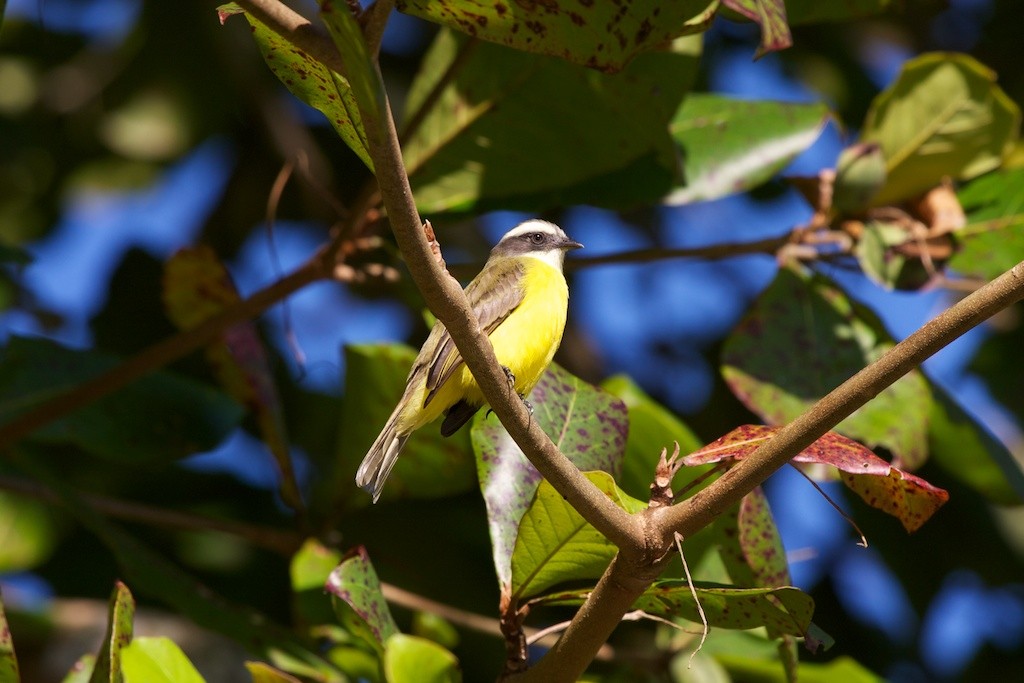Social Flycatcher
A species of Myiozetetes Flycatchers Scientific name : Myiozetetes similis Genus : Myiozetetes Flycatchers
Social Flycatcher, A species of Myiozetetes Flycatchers
Botanical name: Myiozetetes similis
Genus: Myiozetetes Flycatchers
Content
Description People often ask General Info
Description
In appearance, the social flycatcher resembles a smaller boat-billed flycatcher or great kiskadee. The adult is 16–18 cm (6.3–7.1 in) long and weighs 24–27 g (0.85–0.95 oz). The head is dark grey with a strong white eyestripe and a usually concealed orange to vermilion crown stripe. The upperparts are olive-brown, and the wings and tail are brown with only faint rufous fringes. The underparts are yellow and the throat is white. Young birds have a paler eye mask, reduced crown stripe, and have chestnut fringes to the wing and tail feathers. The call is a sharp peeurrr and the dawn song is a chips-k’-cheery. As the specific epithet similis (Latin for "the similar one") indicates, this species looks much like its closest living relative the rusty-margined flycatcher (Myiozetetes cayanensis), and also like the white-bearded flycatcher (Phelpsia inornatus), white-ringed flycatcher (Conopias albovittatus) and lesser kiskadee (Pitangus/Philohydor lictor). In fact, except at close range, these are all but indistinguishable from appearance alone. They and the two larger similar species mentioned above share much of their range. Though they all are apparently fairly close relatives, the group to which they seem to belong also includes species with rather different head-pattern, like the grey-capped flycatcher which also belongs to Myiozetetes. 
Size
19 cm
Colors
Brown
Black
Yellow
Bronze
Gray
White
Nest Placement
Tree
Feeding Habits
Social Flycatcher primarily feeds on insects and other small prey like tadpoles, supplementing its diet with small berries, arillate seeds, and various fruits. Utilizing agile aerial hunting techniques, social Flycatcher is adept at capturing food, exhibiting a varied foraging behavior that enables it to exploit diverse food sources.
Habitat
Social Flycatcher favor semi-open lowland areas with a prevalence of bushes and trees, such as shrubby clearings and secondary growth near forest edges. They adapt well to various moist to semi-arid environments, often near water sources like lakes and rivers. Social Flycatcher also inhabit human-modified landscapes, including gardens, farmlands, and urban settings up to altitudes of 1700 meters.
Dite type
Insectivorous
People often ask
General Info
Feeding Habits
Bird food type
Bird Feeder Type

Platform
Species Status
Not globally threatened.
Scientific Classification
Phylum
Chordates Class
Birds Order
Perching birds Family
Tyrant flycatchers Genus
Myiozetetes Flycatchers Species
Social Flycatcher 